- Region
- Águilas
- Alhama de Murcia
- Jumilla
- Lorca
- Los Alcázares
- Mazarrón
- San Javier
-
ALL AREAS & TOWNS
- AREAS
- SOUTH WEST
- MAR MENOR
- MURCIA CITY & CENTRAL
- NORTH & NORTH WEST
- TOWNS
- Abanilla
- Abarán
- Aguilas
- Alamillo
- Alcantarilla
- Aledo
- Alhama de Murcia
- Archena
- Balsicas
- Blanca
- Bolnuevo
- Bullas
- Cañadas del Romero
- Cabo de Palos
- Calasparra
- Camping Bolnuevo
- Campo De Ricote
- Camposol
- Canada De La Lena
- Caravaca de la Cruz
- Cartagena
- Cehegin
- Ceuti
- Cieza
- Condado de Alhama
- Corvera
- Costa Cálida
- Cuevas De Almanzora
- Cuevas de Reyllo
- El Carmoli
- El Mojon
- El Molino (Puerto Lumbreras)
- El Pareton / Cantareros
- El Raso
- El Valle Golf Resort
- Fortuna
- Fuente Alamo
- Hacienda del Alamo Golf Resort
- Hacienda Riquelme Golf Resort
- Isla Plana
- Islas Menores & Mar de Cristal
- Jumilla
- La Azohia
- La Charca
- La Manga Club
- La Manga del Mar Menor
- La Pinilla
- La Puebla
- La Torre
- La Torre Golf Resort
- La Unión
- Las Palas
- Las Ramblas
- Las Ramblas Golf
- Las Torres de Cotillas
- Leiva
- Librilla
- Lo Pagan
- Lo Santiago
- Lorca
- Lorquí
- Los Alcázares
- Los Balcones
- Los Belones
- Los Canovas
- Los Nietos
- Los Perez (Tallante)
- Los Urrutias
- Los Ventorrillos
- Mar De Cristal
- Mar Menor
- Mar Menor Golf Resort
- Mazarrón
- Mazarrón Country Club
- Molina de Segura
- Moratalla
- Mula
- Murcia City
- Murcia Property
- Pareton
- Peraleja Golf Resort
- Perin
- Pilar de la Horadada
- Pinar de Campoverde
- Pinoso
- Playa Honda
- Playa Honda / Playa Paraíso
- Pliego
- Portmán
- Pozo Estrecho
- Puerto de Mazarrón
- Puerto Lumbreras
- Puntas De Calnegre
- Region of Murcia
- Ricote
- Roda
- Roldan
- Roldan and Lo Ferro
- San Javier
- San Pedro del Pinatar
- Santiago de la Ribera
- Sierra Espuña
- Sucina
- Tallante
- Terrazas de la Torre Golf Resort
- Torre Pacheco
- Totana
- What's On Weekly Bulletin
- Yecla


- EDITIONS:
 Spanish News Today
Spanish News Today
 Alicante Today
Alicante Today
 Andalucia Today
Andalucia Today
Propagating lavender and enjoying one of the best dry landscaping plants at your disposal
Gardening in Murcia, how to propagate lavender
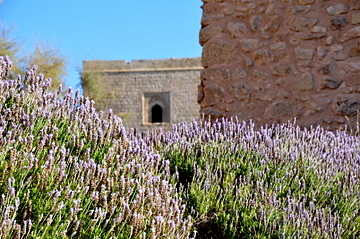
Whilst the hills of Southern France and the shocking red of Tuscany have long been the choice of the discerning artist, Spain is also an important lavender growing country, and here in the region of Murcia, lavender has long been grown for medicinal and herbal purposes.
Areas of north Murcia still produce lavender commercially today, and one of the biggest disappointments weve ever experienced since moving here occurred one day in the northern province of Moratalla when out walking in the woodland areas which surround the town.

The anguish of not having a camera at that moment to capture what was almost an ethereal experience was so acute, but what a memory and what an unexpected pleasure to find lavender still being produced on that scale today.
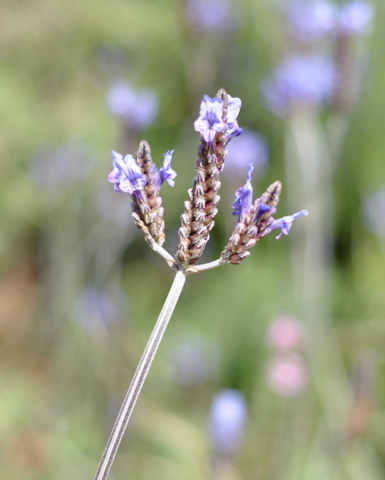
Lavender thrives in this climate, and grows wild in the rambla near to our home, this photo on the left showing the extraordinary spiral of the wild lavender, as well as beside every ruined cottage which litters the nearby hills. Its an infinitely practical plant for this climate, requiring virtually no summer watering and available in a multitude of options which can give deep vibrant colour interest, or cover large patches of dry landscape gardening, just requiring a severe haircut once a year to keep it under control.
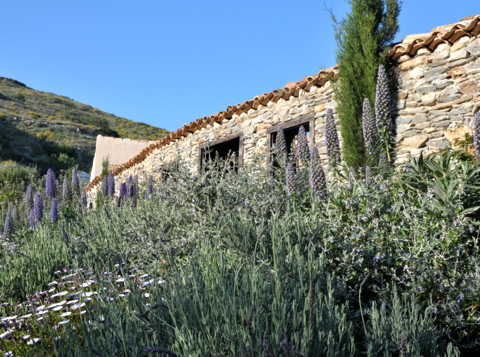
Its also extremely easy to propagate, and grows very rapidly, a tiny cutting will be a rampant, flowering mound within a year.
We have clumps which are now more than 2 metres across, which were a tiny scrap liberated from a council roundabout just 2 years ago.
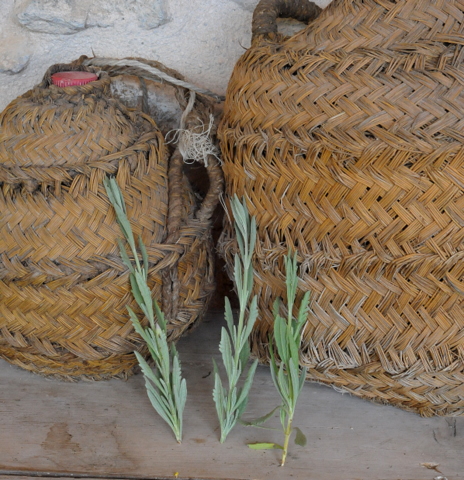
Strip off all the lower leaves, leaving the greenwood tip and the last set of leaves which are on the softwood stem, before the stem becomes bendy and turns to greenwood.
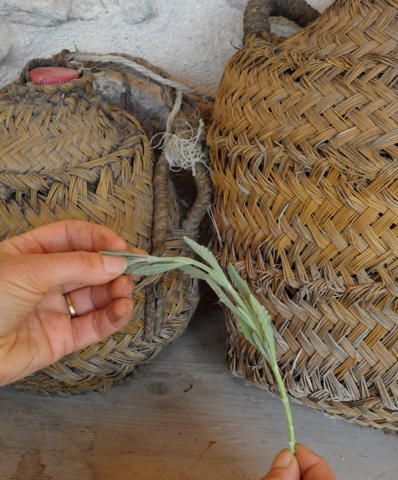
Once the cuttings are prepared, dip the bottom of the stem in water, dust the bottom with hormone rooting powder and pot into damp compost, ensuring that the cutting is buried to just below the first set of leaves.
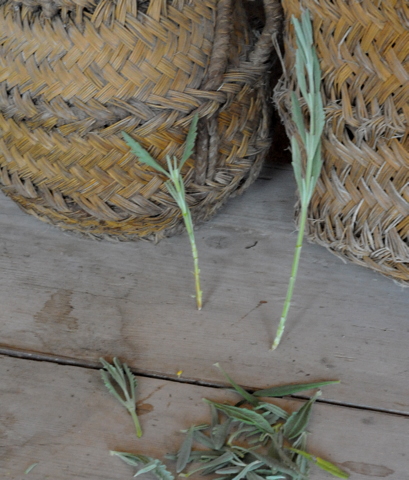
The bag is usually on for around 10 days, within which time it is very obvious if the cuttings are going to take or not, and if the leaves show any sign of rot, the bag comes straight off, along with the damaged leaves.
Great care needs to be taken when treating cuttings in this climate as cuttings placed carelessly in the sunlight can cook inside their plastic bags, so we always make sure there is a little hole in the bag and place in a light position, but out of direct sunlight.
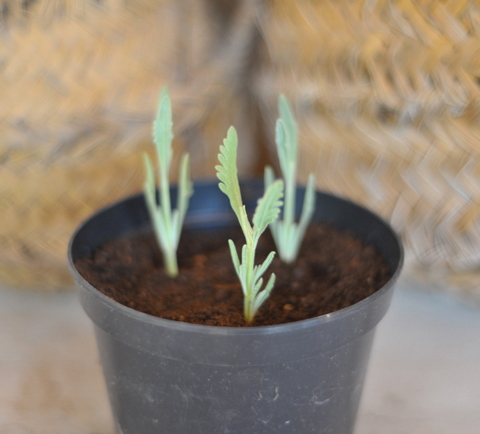
If one cutting per pot makes it through to adulthood, we‘re very happy, and if all 3 take, well, they can always be potted on once the roots are established, although lavender doesnt seem to be too happy being moved, so we dont stress it more than necessary.
Cuttings taken in May/June can be planted out in December, in the middle of the rainy season, and will flower in their first spring, then rampage into an enormous plant by the following year.
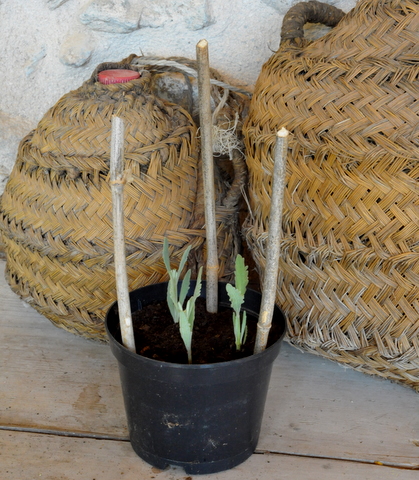
And the best thing about lavender is that goats and sheep wont eat it, and even the chickens wont cross a barrier of lavender, so it ‘s an excellent way of keeping those destructor chickens out of a garden without making the place look like a concentration camp
If youve got a dry community garden, take lavender cuttings by the dozen, and choose the varieties which grow on council roundabouts, as theyre the most tolerant of the regional climate, fill enormous spaces in no time at all, and make a perfect backdrop to show off other Mediterranean plants.
It really is one of the gardeners best friends.











































